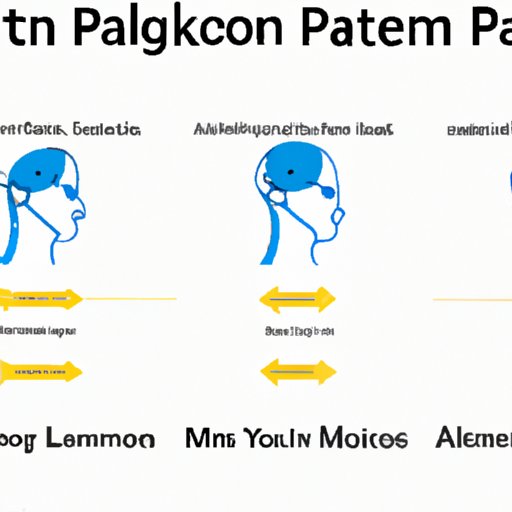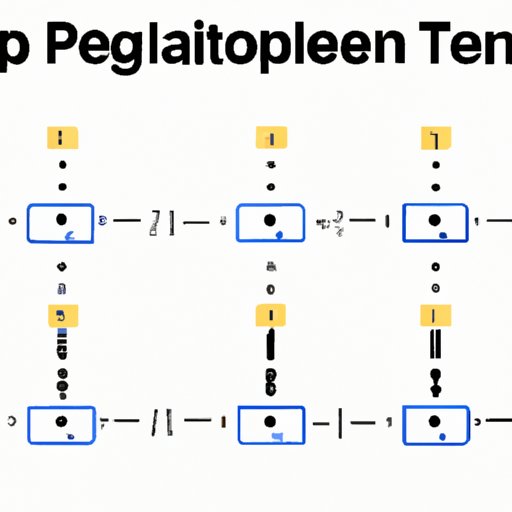Introduction
Artificial intelligence (AI) and machine learning (ML) have rapidly become some of the most sought-after skills among software engineers. With the rise of data science, there is a growing demand for professionals who can develop intelligent systems that can learn from data and make decisions without human intervention. Python has quickly become one of the most popular programming languages for AI and ML, as it is easy to learn, extensible, and highly versatile.
In this article, we’ll explore how to create AI in Python, beginning with an overview of the topics we’ll cover. We’ll then look at the basics of AI and ML, discuss popular libraries for AI and ML, and build a simple AI program with Python. We’ll also explore how to apply machine learning algorithms to create an AI model, program neural networks, develop natural language processing, and understand reinforcement learning.
Exploring the Basics of Artificial Intelligence and Machine Learning in Python
Before diving into the specifics of creating AI in Python, let’s take a look at the core concepts of AI and ML. AI is a broad field that involves the development of computer systems that are able to perform tasks that typically require human intelligence, such as visual perception, speech recognition, decision making, and language translation. On the other hand, ML is a subset of AI that focuses on the development of algorithms that allow computers to learn from data and improve over time without being explicitly programmed.
Python is one of the most popular programming languages for AI and ML due to its versatility and ease of use. There are several popular libraries available for AI and ML in Python, including TensorFlow, Keras, Scikit-Learn, and PyTorch. These libraries provide powerful tools for data manipulation, analysis, and machine learning.
Building a Simple AI Program with Python
Now that you have a basic understanding of the concepts of AI and ML, let’s look at how to create a simple AI program with Python. The first step is to set up your environment by installing the necessary libraries and packages. You can do this using the pip command or by downloading packages from the Python Package Index (PyPI). Once your environment is set up, you’re ready to start coding your AI program.
The next step is to create an AI model. This involves defining the problem you want to solve, collecting and preprocessing the data, selecting the appropriate algorithm, and designing the architecture of the model. Once you’ve created your model, you’ll need to test and debug it to ensure that it works properly.

Applying Machine Learning Algorithms to Create an AI Model in Python
Once you’ve built a simple AI program, you can begin to apply machine learning algorithms to create an AI model. Choosing the right algorithm is key to achieving the desired results, so it’s important to understand the different types of algorithms and their applications. Popular algorithms include linear regression, logistic regression, decision trees, support vector machines, and k-nearest neighbors.
Once you’ve chosen the right algorithm for your project, you’ll need to implement it in Python. This involves writing code to define the model, train it on the data, and evaluate the performance of the model. It’s important to test the model on different datasets to ensure that it is working correctly.
Programming Neural Networks in Python
Neural networks are a type of deep learning algorithm that are inspired by the structure of the human brain. They are widely used in AI applications, such as image and speech recognition, natural language processing, and robotics. Programming neural networks in Python requires understanding the fundamentals of deep learning, including defining the network architecture, training the model, and testing the performance.
When designing a neural network architecture, you must decide on the number of layers, the number of neurons in each layer, and the activation functions. It’s also important to choose the right optimization algorithm and loss function. Once the architecture is defined, you can train the model using a variety of techniques, such as gradient descent, backpropagation, and stochastic gradient descent.

Developing Natural Language Processing with Python
Natural language processing (NLP) is a subfield of AI that deals with the understanding and generation of human language. Developing NLP models with Python requires understanding the fundamentals of NLP, such as text mining, linguistics, and semantic analysis. There are several popular libraries available for NLP in Python, including NLTK, spaCy, and gensim.
To create a natural language model, you’ll need to tokenize the text, identify parts of speech, and extract features from the text. Once the data is prepared, you can apply a variety of algorithms, such as support vector machines, Naive Bayes, and recurrent neural networks. Finally, you’ll need to evaluate the performance of the model to ensure that it is working correctly.

Understanding Reinforcement Learning with Python
Reinforcement learning is a type of machine learning that involves agents that learn from their environment by taking actions and receiving rewards or punishments. Understanding reinforcement learning requires knowledge of game theory, Markov decision processes, and Monte Carlo methods. Popular libraries for reinforcement learning in Python include OpenAI Gym, TensorForce, and PyBrain.
When implementing reinforcement learning in Python, you’ll need to define the state space, action space, reward function, and policy. You’ll then need to select an appropriate algorithm, such as Q-learning, SARSA, or Deep Q-learning, and train the agent on the environment. Finally, you’ll need to evaluate the performance of the agent to ensure that it is learning correctly.
Conclusion
In this article, we explored how to create AI in Python, beginning with an overview of the topics we’ll cover. We then looked at the basics of AI and ML, discussed popular libraries for AI and ML, and built a simple AI program with Python. We also explored how to apply machine learning algorithms to create an AI model, program neural networks, develop natural language processing, and understand reinforcement learning.
(Note: Is this article not meeting your expectations? Do you have knowledge or insights to share? Unlock new opportunities and expand your reach by joining our authors team. Click Registration to join us and share your expertise with our readers.)
